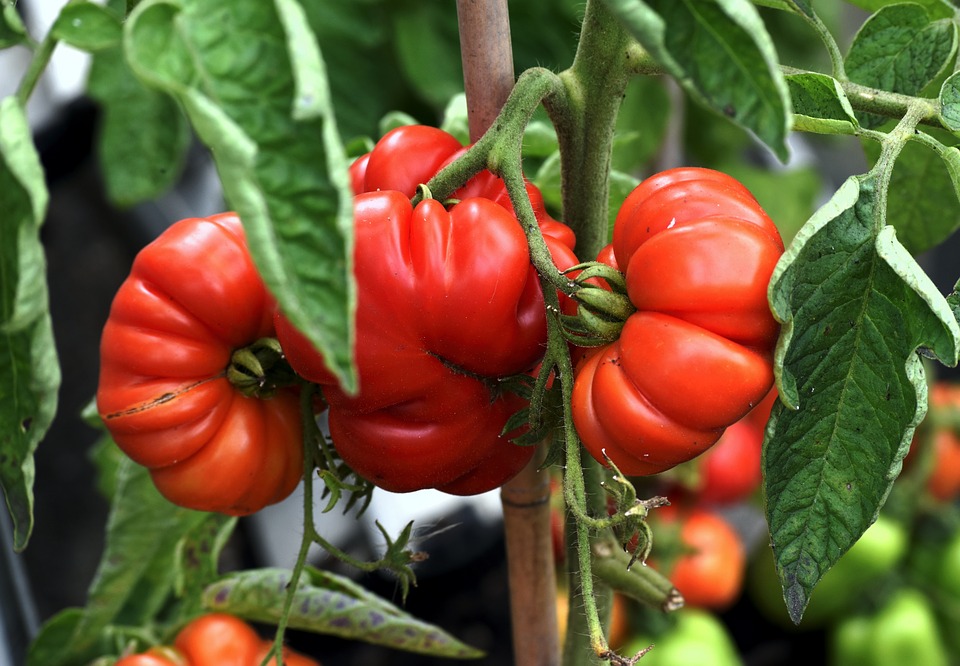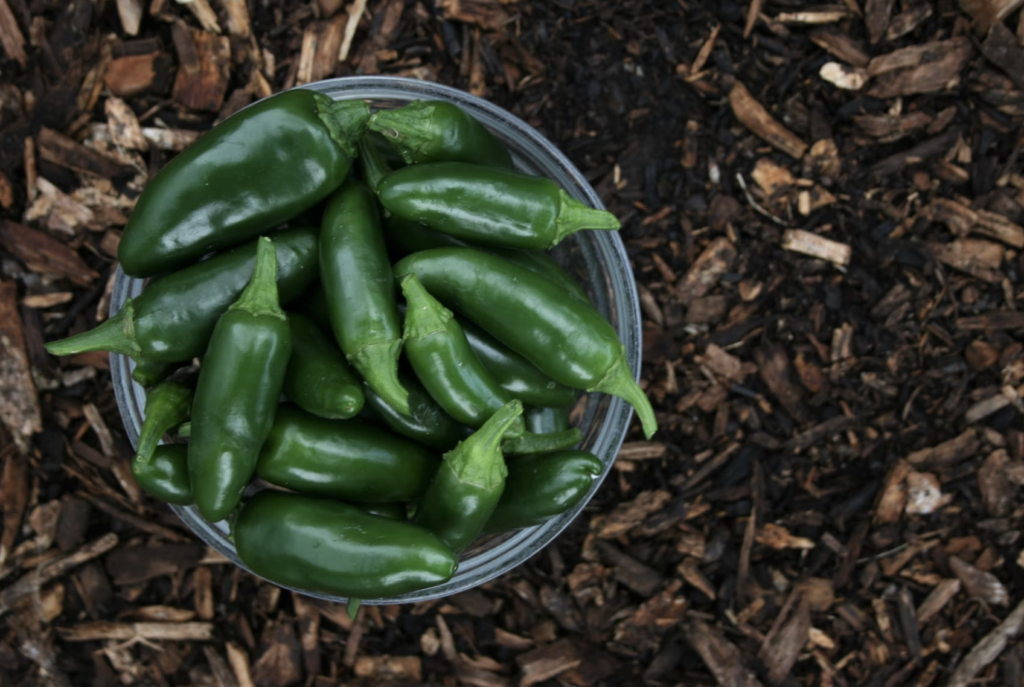It may not feel like it yet, but Fall is coming! It’s already time to plant your tomatoes and peppers. We want to make sure you get a big harvest with plenty to share! Here are a few key tips.
Tips for Tomatoes

Start tomatoes in a bed enriched with Nature’s Blend Compost, about 1 bag per 12 square feet mixed into the existing soil. You can also plant them in pots, but make sure the pot is large enough; tomato plants get big! Use a good potting mix if planting in pots. As you plant, add a couple tablespoons of Bio-tone plant starter under the roots. This will help your plants get off to a rapid start and develop a strong root system. Tomatoes are one of the very few plants that can and should be planted deep. Plant deep and new roots will grow off the main stem. Key tip: add a tomato cage when you plant! If you try to add it later, you’ll end up breaking branches.
Feed tomatoes once a month with a good organic like Plant-tone or Medina Growin’ Green, and supplement every 2 weeks with liquid Hasta Gro to ensure good production. Set a calendar reminder for the 1st (granular food) and the 15th of the month (liquid food) to make this easy.
Be sure to rotate where you plant your tomatoes! This will help in the prevention of root knot nematodes as well as other problems that can occur. Learn more about crop rotation here.
Tips for Peppers

Peppers love warm weather and sunlight, so its important to get them going now to get good production before temps get too cool. Unlike tomatoes, peppers should be planted level with the surrounding soil or slightly higher. Like most plants, they have feeder roots on the surface of the root ball which should not be buried with soil. Otherwise, use the same procedure as tomatoes. Enrich the existing soil with Nature’s Blend Compost and add Bio-tone plant starter when you plant.
Peppers are heavy feeders too if you want good production. You can follow the same feeding schedule: 1st of the month with a granular organic food, then 15th of the month with liquid Hasta Gro.
Tips for Watering!
Since it’s still very warm out, be sure you have a good plan for watering your garden. New veggie plants will need water every day, at least until they get established. It’s a good idea to position your veggie beds near a water source if you’re planning to water by hand. Soaker hoses are great for veggie beds too. Just snake a soaker hose around your plants in the bed and turn on the water as needed. Soaker hoses also help ensure proper watering – remember that plants should be watered at ground level, not sprayed from above. A good layer of mulch over your veggie beds will help retain moisture. And we’ll say it again…a moisture meter will come in handy and take out the guesswork.



Reader Interactions